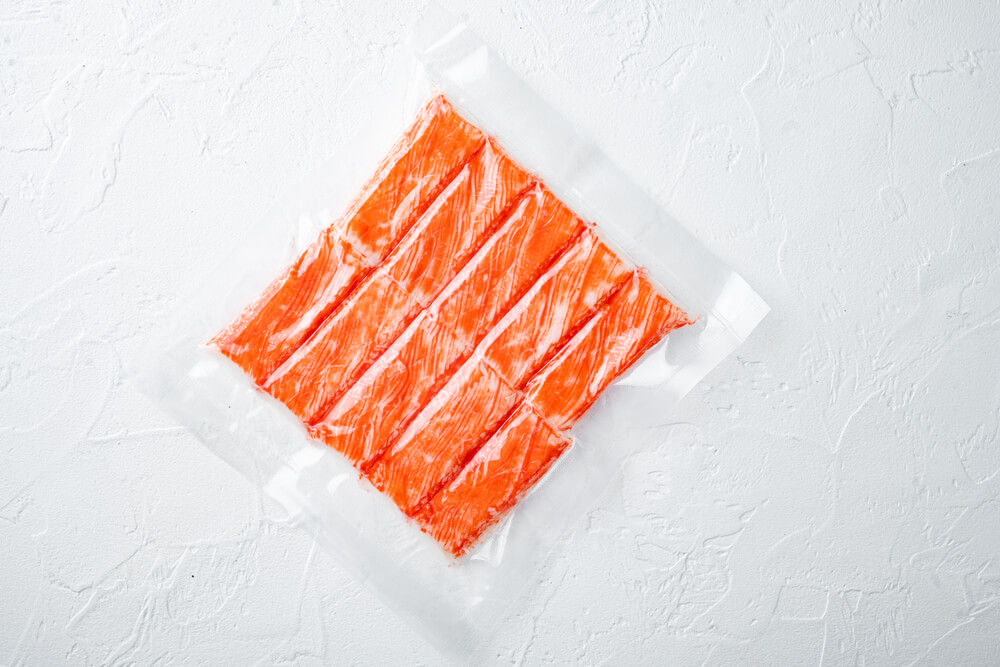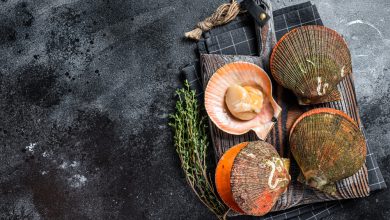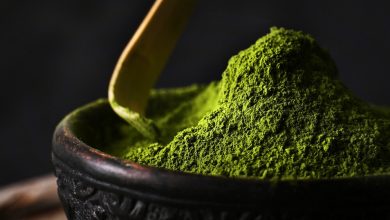What is Imitation Crab Made Of and Is It Healthy

Imitation crab, or surimi, is a seafood substitute replicating real crab meat’s taste and texture. Common in sushi, salads, and various dishes, it offers a budget-friendly alternative. This text examines its ingredients, nutritional profile, health benefits, and potential concerns to help you decide on including imitation crab in your diet without compromising flavor or nutrition.
The Main Ingredients in Imitation Crab
Imitation crab, a popular seafood alternative, is primarily made from surimi. Surimi is a fish paste that forms the base of this product. It is typically derived from white-fleshed fish like pollock or hake, which are minced and then washed to remove fats and unwanted bits, leaving behind a concentrated protein paste.
To transform surimi into imitation crab, various food additives are incorporated. These include starches and egg whites to improve texture and binding properties. Flavoring agents are also essential; they help mimic the taste of real crab meat by adding specific seafood flavors.
Colorants play a crucial role in making imitation crab visually appealing. Paprika or carmine may be used to give it that distinctive reddish hue on the outside while maintaining a white interior, closely resembling actual crab meat.
Thus, through the careful combination of surimi, food additives, flavoring agents, and colorants, imitation crab achieves its familiar taste and appearance while offering an affordable alternative to real crab meat.
Nutritional Profile (What’s Inside Your Imitation Crab?)

When it comes to imitation crab nutrition facts, one of the first things to note is its calorie content. A typical serving size of imitation crab (about 3 ounces) contains approximately 81 calories. This makes it a relatively low-calorie option for those looking to manage their caloric intake.
The protein content in imitation crab is another important aspect to consider. While it doesn’t match up to real crab meat, imitation crab still provides a decent amount of protein, around 6 grams per serving. This can be beneficial for muscle maintenance and repair, especially when included as part of a balanced diet.
In terms of carbohydrates, carbohydrates in imitation crab are present but not excessive. A standard serving contains about 12 grams of carbohydrates, which includes sugars added during processing to enhance flavor and texture.
Overall, while imitation crab may not offer the same nutritional benefits as real seafood, it serves as a convenient and lower-cost alternative that fits well into various dishes. Whether you’re counting calories or seeking moderate protein intake with manageable carbohydrate levels, imitation crab can be an acceptable addition to your meal plan.
The Health Benefits of Imitation Crab
Imitation crab, also known as surimi, is a popular low-calorie seafood alternative that offers several health benefits. Made from finely pulverized fish, typically Alaskan pollock, and other ingredients to mimic the taste and texture of real crab meat, imitation crab is an excellent option for those looking to enjoy seafood without the high cost or calorie count.
One of the major advantages of imitation crab is its protein content. As a protein-rich food, it provides essential amino acids necessary for muscle repair and growth. This makes it an ideal choice for individuals aiming to increase their protein intake without consuming excessive calories.
Additionally, surimi products often contain omega-3 fatty acids, which are known for their heart-health benefits. Omega-3s can help reduce inflammation in the body, lower blood pressure, and decrease the risk of chronic diseases such as heart disease and arthritis.
Imitation crab serves as a nutritious and convenient option for those seeking a low-calorie seafood alternative that still delivers on taste and health benefits. Its rich protein content and presence of omega-3 fatty acids make it a valuable addition to any balanced diet.
The Health Concerns of Consuming Imitation Crab
Imitation crab, often found in sushi rolls and seafood salads, is a popular alternative to real crab due to its lower cost and similar taste. However, there are several health concerns associated with its consumption that consumers should be aware of.
One major issue is the presence of food additives. Imitation crab is typically made from surimi, a paste created by grinding various types of fish. To achieve the desired flavor and texture, manufacturers add numerous food additives, including artificial flavors and colors. These additives can raise health concerns for some individuals, as they may cause allergic reactions or other adverse effects.
Another significant concern is the high sodium content in processed foods like imitation crab. Sodium is commonly used as a preservative and flavor enhancer in these products. Excessive sodium intake can lead to high blood pressure and increase the risk of heart disease over time. Therefore, those monitoring their sodium levels should be cautious when consuming imitation crab.
Additionally, allergies to fish proteins and additives present another risk factor. While imitation crab does not contain actual crab meat, it does contain fish proteins that can trigger allergic reactions in sensitive individuals. Moreover, some people may also react negatively to specific additives used in the production process.
While imitation crab offers an affordable alternative to real crab meat, it comes with potential health risks related to food additives concerns, high sodium content in processed foods, and allergies to fish proteins and additives. Being informed about these issues can help consumers make better dietary choices for their overall well-being.
How to Incorporate Imitation Crab into a Balanced Diet
Incorporating imitation crab, also known as surimi, into a balanced diet can be both delicious and nutritious. Imitation crab is a versatile seafood alternative that offers a low-calorie option for those looking to maintain or achieve a healthy lifestyle. Here are some tips on how to include this ingredient in your meal planning effectively.
One of the easiest ways to enjoy imitation crab is by adding it to salads. Create a refreshing and healthy recipe with imitation crab by mixing it with fresh vegetables like lettuce, cucumbers, tomatoes, and avocados. Top it off with a light vinaigrette dressing for a satisfying and low-calorie meal.
Another great way to incorporate surimi products into your diet is by making sushi rolls at home. Use brown rice instead of white rice for added fiber and pair the imitation crab with various vegetables such as carrots, bell peppers, and seaweed. This not only makes for an enjoyable cooking experience but also ensures you’re consuming essential nutrients from multiple food groups.
For those who prefer warm dishes, consider adding imitation crab to soups or stir-fries. A simple miso soup with tofu, seaweed, and chunks of surimi can be both comforting and nourishing. Alternatively, stir-frying imitation crab with an assortment of colorful vegetables like broccoli, snap peas, and mushrooms can create a quick yet balanced meal packed with vitamins.
Balanced meal planning with seafood alternatives like imitation crab can help diversify your diet while keeping calorie intake in check. By incorporating these healthy recipes into your routine, you’ll be able to enjoy flavorful meals that support overall wellness without compromising on taste or nutrition.


